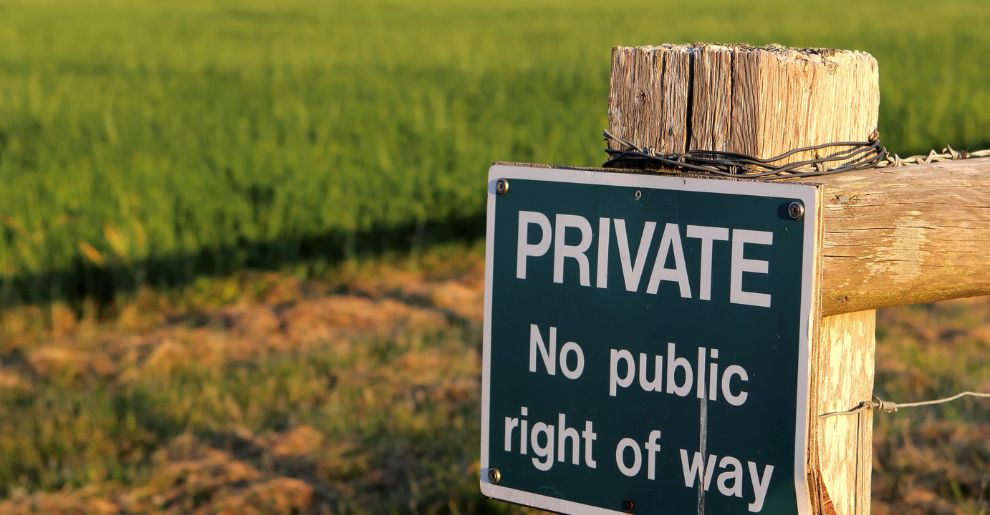Public right-of-way claims – what are they, and can they be prevented?

You may have heard of the term ‘public right-of-way’ and wondered what it means.
A public right-of-way could be a footpath or a bridleway. The first is a highway over which the public is able to use on foot only, examples of this would be a pavement or path running alongside a road. The latter is a highway over which the public has rights of way on foot; bicycle; horseback and when leading a horse.
There is no clear statutory definition of a highway however, the common law defines it as a common route which people can pass and repass along as frequently as they wish without hindrance and charge. A highway remains a public right of way until either it physically ceases to exist or if it is closed by a statutory procedure – closure/extinguishment order or diversion order. In this article, we will discuss what public right-of-way claims are and how to prevent them.
What is a public right-of-way claim?
A public right-of-way claim is a legal process that allows the public to use a certain area of private land for passage. These claims can be made by government bodies or by individuals, and they are typically made when there is no existing public access to a particular area. Once a claim has been made, the landowner is required to allow public access to the claimed area.
How are public right-of-way claims made?
Public right-of-way claims can be established through various legal means, including:
Right-of-way based on long use
When someone uses a portion of private land for a specific period of time without the owner’s permission, rights-of-way can occur. This is known as a prescriptive easement. If this use is continuous and open, the user may be able to claim a right-of-way easement.
Voluntarily
When a landowner voluntarily gives a portion of their land to the public for a specific use, such as a road or pavement, this is known as express dedication. This dedication can be done through a written agreement, with a plan showing the position and the route of the right of way. There are no other formalities to satisfy the express dedication.
On the other hand, presumed dedication occurs when land has been used by the public as of right and without interruption – usually on the basis of more than 20 years of use, which is calculated backwards from the date the existence is brought into question.
How to prevent public right-of-way claims
If you own land and want to prevent public right-of-way claims, there are several steps you can take. First, it is important to be aware of any existing rights-of-way or public access points on your property. This can be done by reviewing your property survey, consulting with a real estate solicitor or contacting your local authority.
If there are no existing public access points on your property, you can take steps to prevent claims from being established. One way to do this is to clearly mark the boundaries of your property with fences, signs, or other barriers. This can prevent people from entering your land and claiming a right-of-way.
If a diversion order has been made over all or part of your land, you can make an objection to the order, which will have to be investigated before the order can become operative.
You also have a right to claim compensation if the diversion order adversely affects the value of your land/interest in land or the enjoyment of the land. You will need to make an application in writing within six months of the commencement of the order to either the authority who made the order or the nominated authority – where the Secretary of State made the order.
Protecting your property
Public right-of-way claims can be a complicated and frustrating process for landowners. By understanding how these claims are established and taking steps to prevent them, you can protect your property rights and avoid potential legal disputes. If you have questions about public right-of-way claims or other property issues, it is always best to consult with a property solicitor for guidance.
If you would like any more information relating to this article then please feel free to contact me: Telephone – 020 8221 8058, email here, or visit my profile here.
This is not legal advice; it is intended to provide information of general interest about current legal issues.
